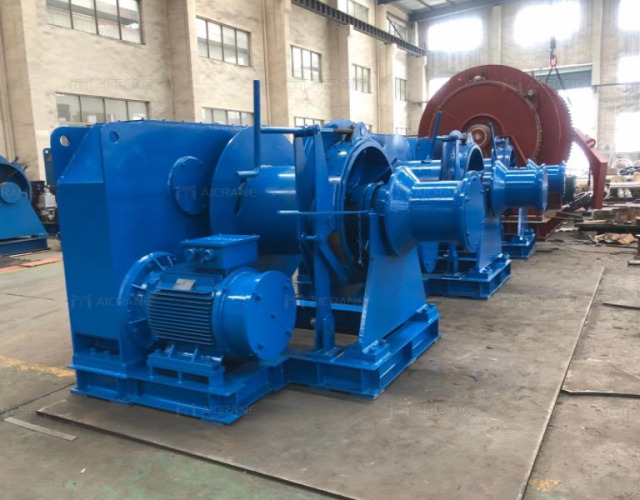Ship winches are essential maritime tools that play a pivotal role in various onboard operations, from anchoring and mooring to cargo handling. When considering the purchase of ship winches, vessel operators and maritime industries must carefully evaluate a range of factors, including functionality, quality, and, notably, price. In this article, we delve into the key considerations that influence ship winch prices and guide prospective buyers toward making informed decisions that balance efficiency and value.

Functionality and Performance
The first step in assessing ship winch prices is understanding the intended purpose and functionality of the winch. Different types of winches cater to specific tasks, such as anchoring, mooring, towing, or cargo handling. The complexity and capacity required for the intended application significantly impact the overall cost.
Load Capacity: The winch's load capacity, measured in tons or pounds, directly affects its price. High-capacity winches capable of handling heavier loads command a higher price due to their robust construction and enhanced features.
Speed and Efficiency: Winches equipped with advanced motor systems, gearboxes, and control mechanisms offer improved efficiency and quicker operation. While these features may increase the initial cost, they contribute to smoother operations and potentially reduced labor costs in the long run.
Quality and Durability
Investing in a high-quality ship winch can lead to significant cost savings over time through reduced maintenance and longer operational lifespans. Several factors contribute to the quality and durability of a winch:
Material and Construction: Winches constructed from corrosion-resistant materials, such as stainless steel or galvanized steel, tend to command a higher price. While the initial investment might be higher, these materials contribute to extended longevity, particularly in harsh marine environments.
Sealing and Protection: Sealing mechanisms and protective coatings are crucial for preventing water intrusion and corrosion. Winches with robust sealing and protective features often come at a premium but can extend the winch's service life and reduce maintenance costs.
Brand Reputation: Established and reputable manufacturers often offer higher-priced winches backed by a history of reliability, customer support, and warranties. While the upfront cost may be higher, the peace of mind and reduced risk of downtime can justify the expense.
Operational Features and Automation
Modern ship winches are equipped with an array of features and automation technologies that enhance operational efficiency and safety. While these advanced capabilities can increase the initial price, they often lead to long-term benefits:
Remote Control and Monitoring: Remote control and monitoring capabilities allow operators to control winch operations from a safe distance, enhancing safety and efficiency. While these features may add to the cost, they can lead to better resource utilization and reduced labor expenses.
Load Sensing and Limiting: Winches equipped with load sensing and limiting mechanisms can prevent overload situations, reducing the risk of equipment damage and costly repairs. While these features contribute to a higher upfront price, they protect the winch and vessel from potential accidents.
Conclusion
When considering ship winch prices, it is essential to strike a balance between functionality, quality, and cost-effectiveness. While a lower-priced winch may seem appealing initially, it may lead to increased maintenance and shorter lifespans. Investing in a higher-quality winch with advanced features can lead to significant cost savings over the long term by reducing downtime, minimizing maintenance expenses, and enhancing operational efficiency.
Ultimately, the decision to purchase a ship winch should be based on a thorough evaluation of the intended application, operational requirements, and the potential return on investment. By carefully considering functionality, quality, and operational features, buyers can make informed decisions that maximize efficiency and value, ensuring smooth and reliable maritime operations for years to come.

